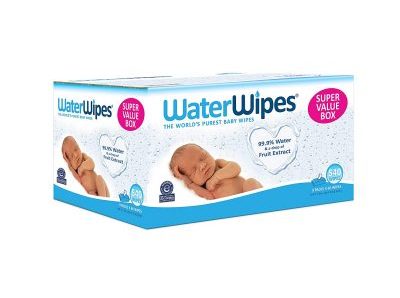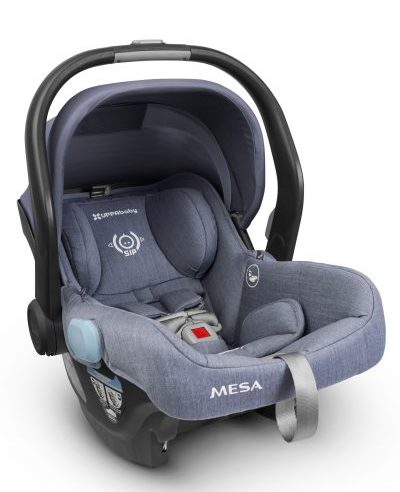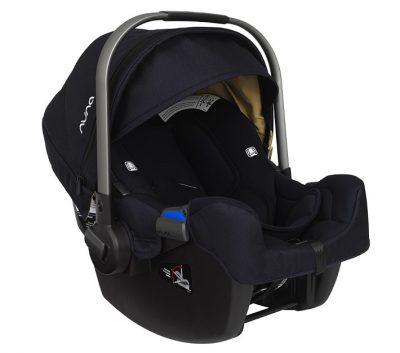“Congratulations, you’re a mom.”
visit our PlayHub for tips, tricks, and toys to help you tackle playtime with confidence!
Those four words you’ve been waiting to hear for months, but what happens after the baby is born? You’ve read all the books, perfected the nursery, gotten advice from all your friends, and now just powered through childbirth like a champ – but are you prepared to bring this little peanut home in just a few short days?!
Best way to learn? Rolling up those sleeves and diving right into parenthood! As a neonatal and postpartum nurse who’s worked with countless new parents and babies, I’ve learned how important it is to spend those first few days learning from everyone around you, especially the doctors, nurses and lactation counselors. Learning these skills will help you walk out those hospital doors as a confident parent.
Read on for the five skills you need to learn before you leave the hospital. Make sure you ask your nurse to take some time out of her day to show you how to do each of these before you head home.
1. How To Swaddle
A good swaddle can be the answer to a fussy baby. It’s important to remember that babies spent 9 months in a very small, snug place, so that’s why they love the comfort of the swaddle.
The swaddle process can be a bit complicated to master. Too loose? The baby will wiggle out and will kick that blanket around everywhere. Too tight? They’re uncomfortable and won’t calm down. A swaddled baby looks like a tight, little burrito.
The most effective way to perfect the swaddle is to give it a try. Ask your nurse to slowly walk through the steps. Next, try it on your own with the nurse watching. The hospital is the perfect setting to make mistakes and ask questions. But beware that nurses move quickly – they will often quickly wrap up your baby and hand them over to you before you can waddle your way back from the bathroom. If you need a refresher once you’re home, here’s our favorite swaddle how-to video.
Feeling like swaddling is too similar to origami? These are our favorite swaddles for newborns, and two of them are very easy to use if you’re not confident in your swaddle game.
2. How To Use A Bulb Syringe
During the first 48 hours, babies can produce lots of fluid in their mouth that they might not be able to clear on their own. At the hospital, your baby’s bassinet will have a little, soft bulb syringe in it at all times to clear out any secretions if your baby needs the help.The bulb syringe can be used in a situation where it looks like your baby has too much fluid in their mouth. Some babies will be very bubbly and you’ll learn this skill quickly, while others may not be at all.
Here’s how to use this handy tool:
- Compress the bulb syringe first (before you put it in the baby’s mouth).
- Gently insert in their mouth, pressed to the side of the baby’s cheek.
- Release the bulb to suction out the excess fluid.
- Remove from mouth and release the mucus into an area away from the baby –blanket, Kleenex, or trash.
- Wipe bulb, and repeat until the baby’s mouth is clear.
Seeing a baby with bubbles coming out of their mouth can be a scary moment for a new parent. This may not happen at the hospital, but it could happen at home when nurses and doctors aren’t present, so don’t be afraid to ask your nurse how to use this important little device.
One important note about the bulb syringe. Once your newborn is older, it can also be used later for nasal congestion. For the first week of life, it’s not recommended to suction your baby’s nose. They should be able to naturally clear their nasal passages with a sneeze, and the bulb syringe can actually inflame their nostrils.

Source: @hellobabybrown
3. How To Diaper
This one is very important! Many parents don’t change a diaper until it’s with their own baby. It’s new and can be scary, given your baby’s itty bitty legs.
Here are my best nurse tips on changing newborn diapers:
- With boys, you need to be quick so you don’t get hit! Put a diaper under them first before undoing the current diaper is the best way to avoid any messes.
- With girls, the most important part is learning how to properly wipe. Females have a sensitive and much smaller urethra than males do, so this means that if bacteria is introduced, they are more susceptible to a urinary tract infection (UTI). Always remember to wipe from the front to the back.
- It’s important to place the diaper below the belly button for the first few days to avoid any irritation of the umbilical cord stump, which is present for the first 7-10 days of life. Most newborn diapers have a cutout section for the umbilical cord.
You want to be comfortable with diaper duty before you’re on your own. Once again, sometimes the nurse may assume this is something you know already – but it can be a skill that takes practice, so ask and they will be more than happy to help you out.
Here are our diapering must-haves.
4. How To Burp
No matter what feeding choice you made for your little one, it’s important to know how to properly burp your baby. Newborns are so little that they can seem fragile. And burping a baby over your shoulder can be an overwhelming task when you are still trying to get comfortable holding them.
Bottle fed babies tend to suck more air in from the bottle, so they should always be burped. Breastfed babies may release fewer burps, but it’s important to offer them the chance.
Ask your nurse to sit down with you and have them show you how they hold the baby in a sitting position in order to properly burp. They will teach you how to support their chin from the front with one hand and then use your other hand to give firm pats on the back. Generally, babies should be burped for three to five minutes.

Source: Amber Diamond
5. How to Properly Use Your Car Seat
This may seem like a no-brainer, but it’s actually harder than it looks. Most hospitals won’t let you go home unless you have a car seat, and nurses will check to make sure your new baby is strapped in correctly before you leave.
To make sure your baby is safe and sound in the car seat, here’s a helpful video from Alisa Bear, a pediatrician and certified car safety expert. When placing your baby in the car seat, Bear recommends avoiding chin-to-chest contact and placing your baby’s head to one side for easy breathing. It’s important to make sure your baby is just wearing one layer in the car seat – so no jackets, fluffy sweaters, etc. This ensures the straps can be as close to the baby as possible. Make sure the straps are tight enough so that only one of your fingers can snuggly fit under the straps. According to Bear, the chest strap should be high enough so it is in line with your baby’s armpits.
Wondering which infant car seat to buy? Here are our favorites.













